Planting cabbage seedlings in open ground: when and how to plant correctly
The seedlings have grown up and seem to be ready for planting in the ground. Everything goes to the point that it will be necessary to take her to the country. But how to determine exactly when it is better to do this, what to look for and how to properly prepare for landing?
Next, you will learn when and how to plant cabbage in open ground, what to add to the hole when planting, and also to what depth to bury the seedlings.
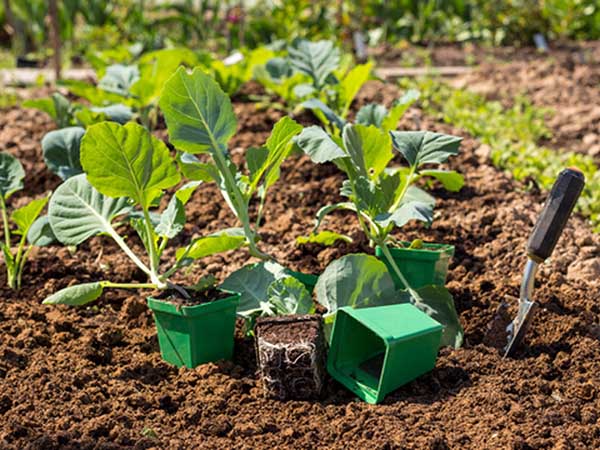
Content
When to plant cabbage seedlings in open ground: timing
Cabbage can survive slight frosts, therefore, they begin to plant its seedlings quite early, literally, when the soil only warms up to the minimum positive values (+5 and above).
Advice! You can navigate by natural "indicator thermometers", in other words, folk signs.The dandelion turned yellow (bloomed), the leaves of the birch became the size of a penny = the soil warmed up, and you can start planting.
How to understand that the seedlings are strong enough and can be planted in open ground?
- Cabbage ready for planting in the ground should have somewhere 4-5 good real leaves, this usually takes about 30-55 days after sowing and germination, i.e. seedlings should be between 30 and 55 days old.
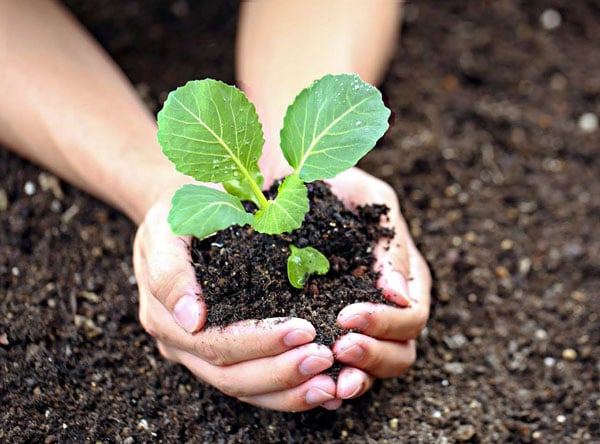
As known, white cabbagea - enough cold-resistant culture, which even tolerates small frosts (up to -5 degrees). Therefore, it can be planted without waiting for the return spring frosts to pass. Naturally, by this time the seedlings must be of the appropriate age.
The same goes for red cabbage, and kohlrabi, broccoli, Brussels sprouts and savoy cabbage.
- But cauliflower is relatively thermophilic, therefore, with its planting in open ground, it is better to wait and plant after frost (approximately simultaneously with tomatoes).
In this way, approximate dates for planting cabbage in open ground in different regions the following (relevant for white cabbage):
- In the South - from March to early April (Volgograd is the South of Russia, but not the Krasnodar Territory at all).
- In the middle lane (in the suburbs) - from the second half of April to early May.
- In the Urals and Siberia - not earlier than May. Similar the timing of planting cabbage in the North-West (in the Leningrad region).
However, you should understand that it is not necessary to plant cabbage in the ground as early as possible (many even plant in June!). Another thing is, if you have the opportunity, then why not drop off.
According to the lunar calendar for 2020
Auspicious days according to the lunar calendar, for planting in open ground all types of cabbage (including cauliflower) in 2020 are:
- April - 1, 2, 11-15, 17-20, 25-30;
- May - 2-4, 6, 9, 10-12, 15-17, 20, 21, 25-29;
- June - 2-4, 7-9, 11-14, 16-19, 30.
Important! If for some reason you cannot perform sowing on favorable days, then you should take into account periods of new moon and full moon, when planting any crops is extremely undesirable, since when sowing at this time, the seedlings are weak and elongated. And also the period when the Moon is in Aquarius, since it is a barren and dry sign - italicized)
Unfavorable days, according to the lunar calendar for 2020, for planting cabbage in the ground (like any other crops) are the following days:
- in April - 8, 15-17, 23;
- in May - 7, 13-14, 22;
- in June - 5, 9-11, 21.

According to the lunar calendar, from the magazine "1000 Tips for Summer Residents".
How to properly plant cabbage seedlings: a step-by-step guide
Choosing a place for a garden and preparing the soil
Naturally, a place under the cabbage bed should be well lit (sunny), while protected from drafts.
Cabbage is very fond of the sun, moisture and space.
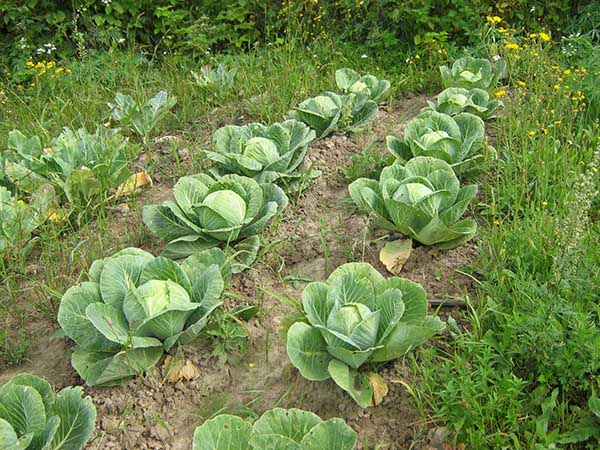
Concerning crop rotation rules, then good precursors for cabbage will be legumes (beans, peas), pumpkin and melons (watermelons, melons, cucumbers, zucchini), as well as especially nightshades (tomatoes, peppers, eggplant, potatoes) and onions (onions, garlic).
Poor predecessors are all cruciferous plants, i.e. radish, radish, turnip, daikon and the cabbage itself.
By the way! It is very good to sow the beds every year siderates.
However! Cabbage should not be planted after cruciferous green manures: mustard, oil radish, rapeseed and rapeseed.
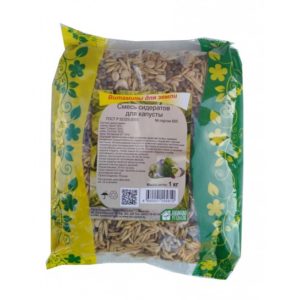
The best neighbors in the garden for cabbage are marigold (can be planted along the edge of the garden), which, in theory, will scare away pests with their fragrant smell.
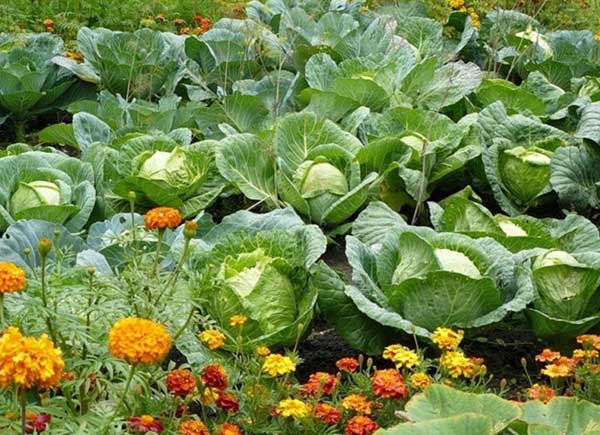
Cabbage, like almost any other vegetable crop, will grow better. on well-fertilized soil... In this case, the soil should be loose (air and moisture permeable).
As known, you need to prepare the beds in the fall, introducing into them for digging phosphoric-potassium fertilizers (superphosphate or bone meal, potassium sulfate, or wood ash), and in the spring only adding nitrogen fertilizers (urea, ammonium nitrate or bird droppings, mullein). Be sure to add humus, compost, peat, and sand to loosen clay soil.
However! If you used to prepare the beds in spring, then, in addition to humus and compost, you can simply apply a complex fertilizer, for example, nitroammofosku (which contains nitrogen, phosphorus and potassium in equal proportions, 16% each).

Also very important check the acidity of your soilsince cabbage prefers an even more alkaline soil (pH closer to 7) than close to neutral (pH closer to 5.5), because in acidic soil it is more often affected by diseases (especially keel).
If it turns out that the soil in your area is acidic, then it must be deacidify, they also say "to produce lime", i.e. make the same wood ash, limestone or dolomite flour, lime fluff, chalk, gypsum.
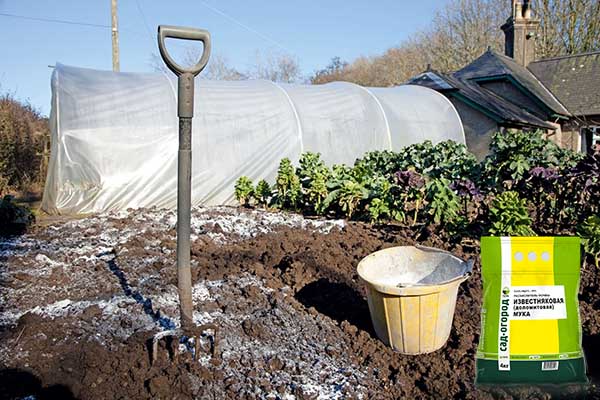
Seedling preparation
Before planting cabbage in the ground, it will be very correct to prepare seedlings in advance for outdoor conditions.
To do this, 7-10 days before planting cabbage in open ground, seedlings should temper - first, just open the window in the room for a couple of hours, and then take it out to the greenhouse for 3-4 hours. In the last days before planting on the garden bed, containers can be left directly in the garden (if the weather permits).
Advice! And the day before planting seedlings, you can shed seedlings Fitosporin solution (for the prevention of diseases, the same keels).
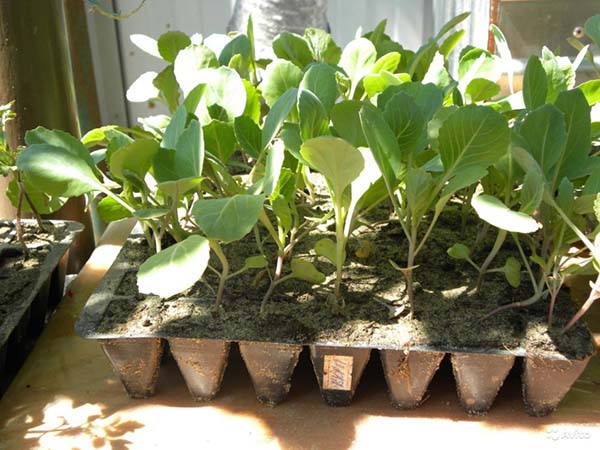
Direct planting of seedlings
Step-by-step instructions for planting cabbage seedlings in open ground:
- Prepare the bed in advance, fertilize the soil and dig small holes (15 cm deep).
If you did not pre-fertilize the soilthen you can add directly to the hole when planting cabbage: 3 handfuls of humus or compost, 1 tbsp each. a spoonful of potassium sulfate and superphosphate (or just nitroammofosk), as well as 2 handfuls dolomite flour and wood ash (as a deoxidizer, calcium and potassium fertilizer), and then mix thoroughly.
- Before planting the wells, spill abundantly with water (for each well up to 2 liters of water).
Can be spilled Fitosporin solution for disinfection.
- Cabbage planting scheme: optimal distance between seedlings - 40-70 cm (the larger the cabbage, the greater the distance between the plants). As always, it is better to plant in a checkerboard pattern.
Remember! Cabbage grows strongly. And if the forks close, they will be cramped, and it will become uncomfortable for you to look after.
- Carefully remove the seedlings from the containers, completely preserving the earthen lump.
If the cotyledon leaves have not fallen off themselves, then they need to be removed yourself
- Plant in moist soil (directly in the slurry), deepening to the first true leaves, and squeeze slightly.
- Sprinkle with dry earth.
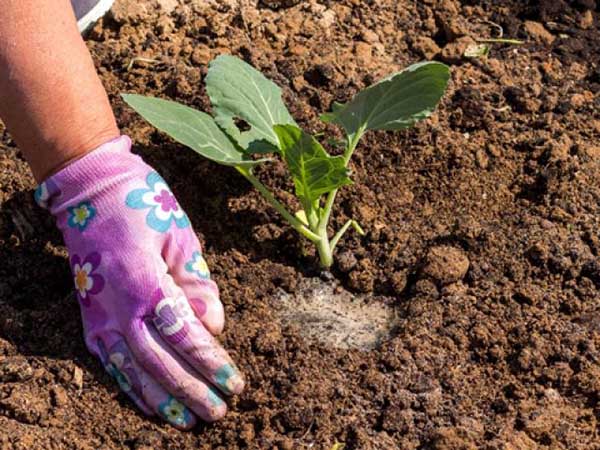
- If you are very worried that the cabbage will be caught in the frost, you can cover the plants with 5 liter plastic bottles with a cut bottom.
- Not hardened and are afraid that it will burn out in the sun, then shade, for example, by making a temporary greenhouse on arcs and covering with spunbond.
Video: how to plant cabbage seedlings in open ground
How to immediately protect cabbage from pests and diseases
- If you have been observed keel, then calcium nitrate (1 tbsp. spoon), sulfur content preparations and / or lime deoxidizers (wood ash, dolomite flour, lime).
If you decide not to add dry deoxidizers, then lime solution (a glass of lime on a bucket of water), they also say to spill "lime milk".
- From bear - special granular insecticidal agents, for example, Grizzly bear, can be embedded in the soil to a depth of 2-5 cm.
The most popular means for repelling pests is Birch tar... You need to pour it lightly around the planted seedling. But only under the bush, in no case on the sheet!
- From cabbage fly - scatter the preparation Terradox, Mukhoed on the soil surface when planting seedlings.
- From slugs and snails - sow on the soil surface, in the aisles and on the paths the drug Slime-eater.
From other pests (cabbage and turnip whites, cabbage scoops, cabbage moth) you will have to spray during the growing season. For example, Senpai, Sharpei, Aliot, Gerold, Fitoverm (biological product!) Will do.
Further care for cabbage outdoors after planting
Of course, for good growth and development (fruiting), plants will need thorough carewhich will include:
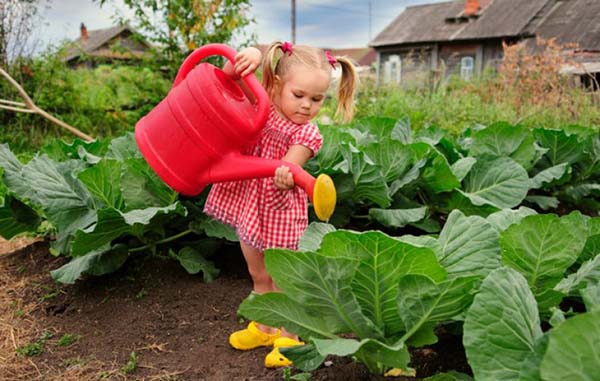
- regular weeding and loosening (after watering);
- top dressing;
If cabbage leaves turn purple, then the plant lacks phosphorus or it is poorly absorbed.
- and mandatory measures to protect cabbage from diseases and especially pests.
Of course, you need to harvest the crop on time and store it correctly.

Well, now you know when you can plant cabbage seedlings and how to do it correctly so that the plants quickly take root in a new place. Big and juicy heads of cabbage for you!
Video: when and how to plant cabbage in open ground

